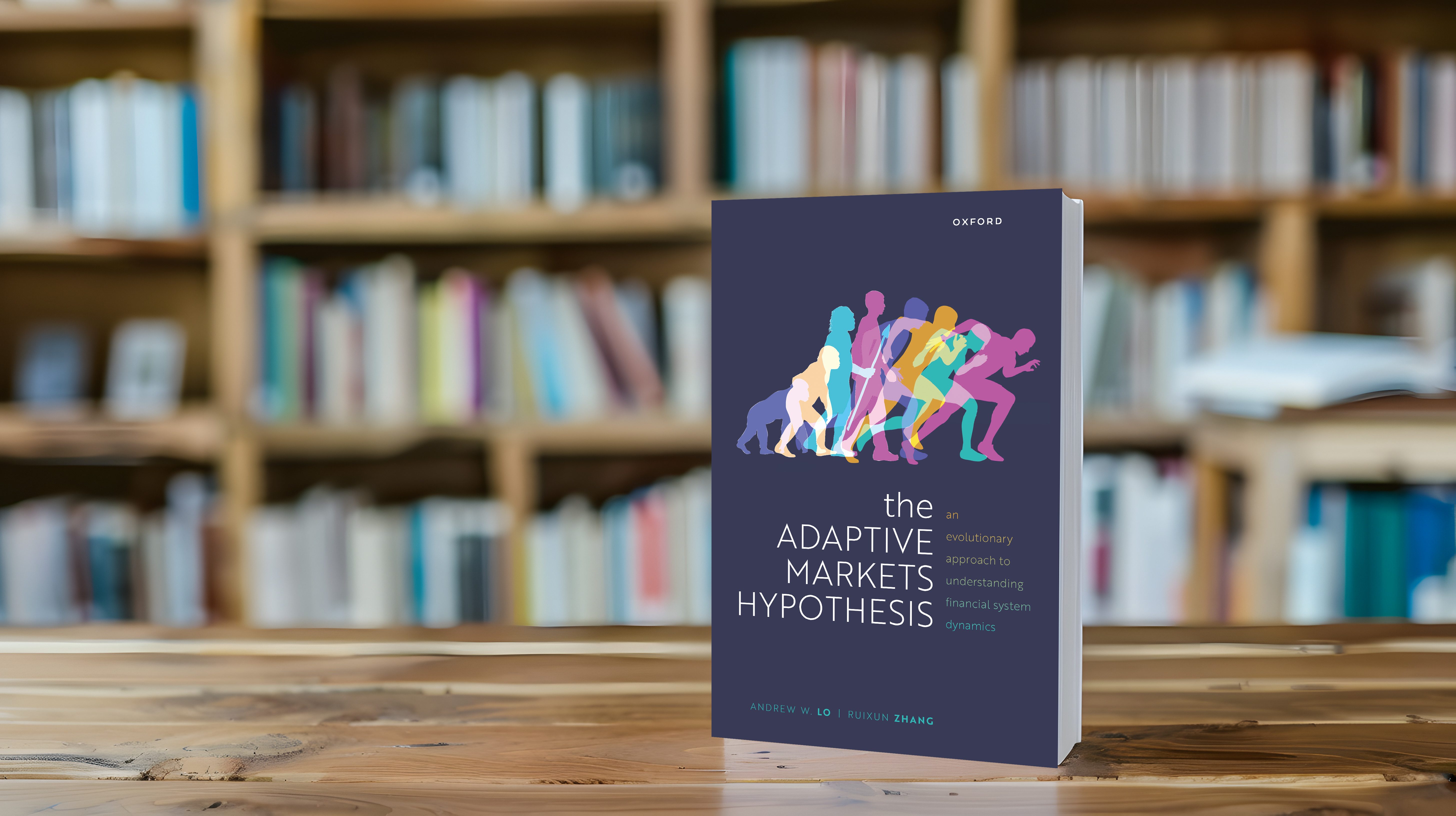Recent Publications
Humans are not homo economicus (i.e., rational economic beings). As humans, we exhibit systematic behavioral biases such as loss aversion, anchoring, framing, etc., which lead us to make suboptimal economic decisions. Insofar as such biases may be embedded in text data on which large language models (LLMs) are trained, to what extent are LLMs prone to the same behavioral biases? Understanding these biases in LLMs is crucial for deploying LLMs to support human decision-making. We propose utility theory-a paradigm at the core of modern economic theory-as an approach to evaluate the economic biases of LLMs. Utility theory enables the quantification and comparison of economic behavior against benchmarks such as perfect rationality or human behavior. To demonstrate our approach, we quantify and compare the economic behavior of a variety of open- and closed-source LLMs. We find that the economic behavior of current LLMs is neither entirely human-like nor entirely economicus-like. We also find that most current LLMs struggle to maintain consistent economic behavior across settings. Finally, we illustrate how our approach can measure the effect of interventions such as prompting on economic biases.
We identify some of the most pressing issues facing the adoption of large language models (LLMs) in practical settings, and propose a research agenda to reach the next technological inflection point in generative AI. We focus on three challenges facing most LLM applications: domain-specific expertise and the ability to tailor that expertise to a user’s unique situation, trustworthiness and adherence to the user’s moral and ethical standards, and conformity to regulatory guidelines and oversight. These challenges apply to virtually all industries and endeavors in which LLMs can be applied, such as medicine, law, accounting, education, psychotherapy, marketing, and corporate strategy. For concreteness, we focus on the narrow context of financial advice, which serves as an ideal test bed both for determining the possible shortcomings of current LLMs and for exploring ways to overcome them. Our goal is not to provide solutions to these challenges—which will likely take years to develop—but to propose a framework and road map for solving them as part of a larger research agenda for improving generative AI in any application.
We develop an evolutionary model for individual discriminatory behavior that emerges naturally in a mixed population as an adaptive strategy. Our findings show that, when individuals have finite memory and face uncertain environments, they may rely on prior biases and observable group traits to make decisions, changing their discriminatory practices. We also demonstrate that a finite memory is a consequence of natural selection because it leads to higher fitness in dynamic environments with mutations. This adaptability allows individuals with finite memory to better respond to environmental variability, offering a potential evolutionary advantage. Our study suggests that memory constraints and environmental changes are critical factors in sustaining biased behavior, suggesting insights into the persistence of discrimination in real-world settings and possible mitigation strategies across fields, including education, policymaking, and artificial intelligence.
Despite its success in financial markets and other domains, collective intelligence seems to fall short in many critical contexts, including infrequent but repeated financial crises, political polarization and deadlock, and various forms of bias and discrimination. We propose an evolutionary framework that provides fundamental insights into the role of heterogeneity and feedback loops in contributing to failures of collective intelligence. The framework is based on a binary choice model of behavior that affects fitness; hence, behavior is shaped by evolutionary dynamics and stochastic changes in environmental conditions. We derive collective intelligence as an emergent property of evolution in this framework, and also specify conditions under which it fails. We find that political polarization emerges in stochastic environments with reproductive risks that are correlated across individuals. Bias and discrimination emerge when individuals incorrectly attribute random adverse events to observable features that may have nothing to do with those events. In addition, path dependence and negative feedback in evolution may lead to even stronger biases and levels of discrimination, which are locally evolutionarily stable strategies. These results suggest potential policy interventions to prevent such failures by nudging the “madness of mobs” towards the “wisdom of crowds” through targeted shifts in the environment
Accurately estimating the correlations among clinical trial outcomes is crucial for managing the risk of biopharmaceutical investment portfolios. We propose a novel algorithm for estimating correlations in large clinical trial datasets using a generalised estimating equations (GEE) framework. Our algorithm outperforms existing methods in both convergence speed and computational efficiency. Empirical analysis of over 25,000 clinical trials reveals a correlation of approximately 10% for trials within therapeutic areas and up to 40% for trials sharing the same phase or mechanism hierarchy. Trials targeting the same disease show slightly negative correlations, suggesting a first-mover advantage. Our approach offers a scalable method to estimate correlations within large clinical trial datasets.
Therapeutic development for rare diseases is difficult for pharmaceutical companies due to significant scientific challenges, extensive costs, and low financial returns. It is increasingly common for caregivers and patient advocacy groups to partner with biomedical professionals to finance and develop treatments for rare diseases. This case study illustrates the story of Terry Pirovolakis, a father who partnered with biomedical professionals to develop the novel gene therapy, Melpida, within 36 months of the diagnosis of his infant son. We identify the factors that led to the success of Melpida and analyze the business model of Elpida Therapeutics, a social purpose corporation founded by Pirovolakis to reproduce the success of Melpida for other rare diseases. We conclude with four lessons from Melpida to inform caregivers like Pirovolakis on developing novel gene therapies to save their loved ones.
We propose a new approach to funding disease-specific drug development via a variation of the adaptive platform trial. This trial is designed to test a portfolio of drug candidates in parallel, with the cost of the trial partially covered by investors who receive payments from a royalty fund of the candidates in exchange for investment. Under realistic assumptions for cost, revenue, probability of success, drug sales, and royalty rates, investors may expect a return of 28%, but with a 22% probability of total loss. Such return distributions may be attractive to hedge funds, family offices, and philanthropic investors seeking both social impact and financial return. Return distributions palatable to mainstream investors may be achieved by funding multiple platform trials simultaneously and securitizing the aggregate cash flows.
Fusion energy faces many hurdles. The history of the biotech industry offers lessons for how to build public trust and create a robust investment ecosystem to help fusion achieve its potential.
The case for investing in fusion energy has never been greater, given increasing global energy demand, high annual carbon dioxide output, and technological limitations for wind and solar power. Nevertheless, financing for fusion companies through traditional means has proven challenging. While fusion startups have an unparalleled upside, their high upfront costs, lengthy delay in payoff, and high risk of commercial failure have historically restricted funding interest to a niche set of investors. Drawing on insights from investor interviews and case studies of public–private partnerships, we propose a megafund structure in which a large number of projects are securitized into a single holding company funded through various debt and equity tranches, with first loss capital guarantees from governments and philanthropic partners. The megafund exploits many of the core properties of the fusion industry: the diversity of approaches to engender fusion reactions, the ability to create revenue-generating divestitures in related fields, and the breadth of auxiliary technologies needed to support a functioning power plant. The model expands the pool of available capital by creating tranches with different risk–return tradeoffs and providing a diversified “fusion index” that can be viewed as a long hedge against fossil fuels. Simulations of a fusion megafund demonstrate positive returns on equity (ROE) and low default rates for the capital raised using debt.
We propose a new performance attribution framework that decomposes a constrained portfolio’s holdings, expected returns, variance, expected utility, and realized returns into components attributable to (1) the unconstrained mean-variance optimal portfolio; (2) individual static constraints; and (3) information, if any, arising from those constraints. A key contribution of our framework is the recognition that constraints may contain information that is correlated with returns, in which case imposing such constraints can affect performance. We extend our framework to accommodate estimation risk in portfolio construction using Bayesian portfolio analysis, which allows one to select constraints that improve—or are least detrimental to—future performance. We provide simulations and empirical examples involving constraints on environmental, social, and governance portfolios. Under certain scenarios, constraints may improve portfolio performance relative to a passive benchmark that does not account for the information contained in these constraints.
Within the contemporary context of environmental, social, and governance (ESG) investing principles, the authors explore the risk–reward characteristics of portfolios in the United States, Europe, and Japan constructed using the foundational tenets of Markowitz’s modern portfolio theory with data from six major ESG rating agencies. They document statistically significant excess returns in ESG portfolios from 2014 to 2020 in the United States and Japan. They propose several statistical and voting-based methods to aggregate individual ESG ratings, the latter based on the theory of social choice. They find that aggregating individual ESG ratings improves portfolio performance. In addition, the authors find that a portfolio based on Treynor–Black weights further improves the performance of ESG portfolios. Overall, these results suggest that significant signals in ESG rating scores can enhance portfolio construction despite their noisy nature.
We develop a mathematical framework for constructing optimal impact portfolios and quantifying their financial performance by characterizing the returns of impact-ranked assets using induced order statistics and copulas. The distribution of induced order statistics can be represented by a mixture of order statistics and uniformly distributed random variables, where the mixture function is determined by the dependence structure between residual returns and impact factors—characterized by copulas—and the marginal distribution of residual returns. This representation theorem allows us to explicitly and efficiently compute optimal portfolio weights under any copula. This framework provides a systematic approach for constructing and quantifying the performance of optimal impact portfolios with arbitrary dependence structures and return distributions.




